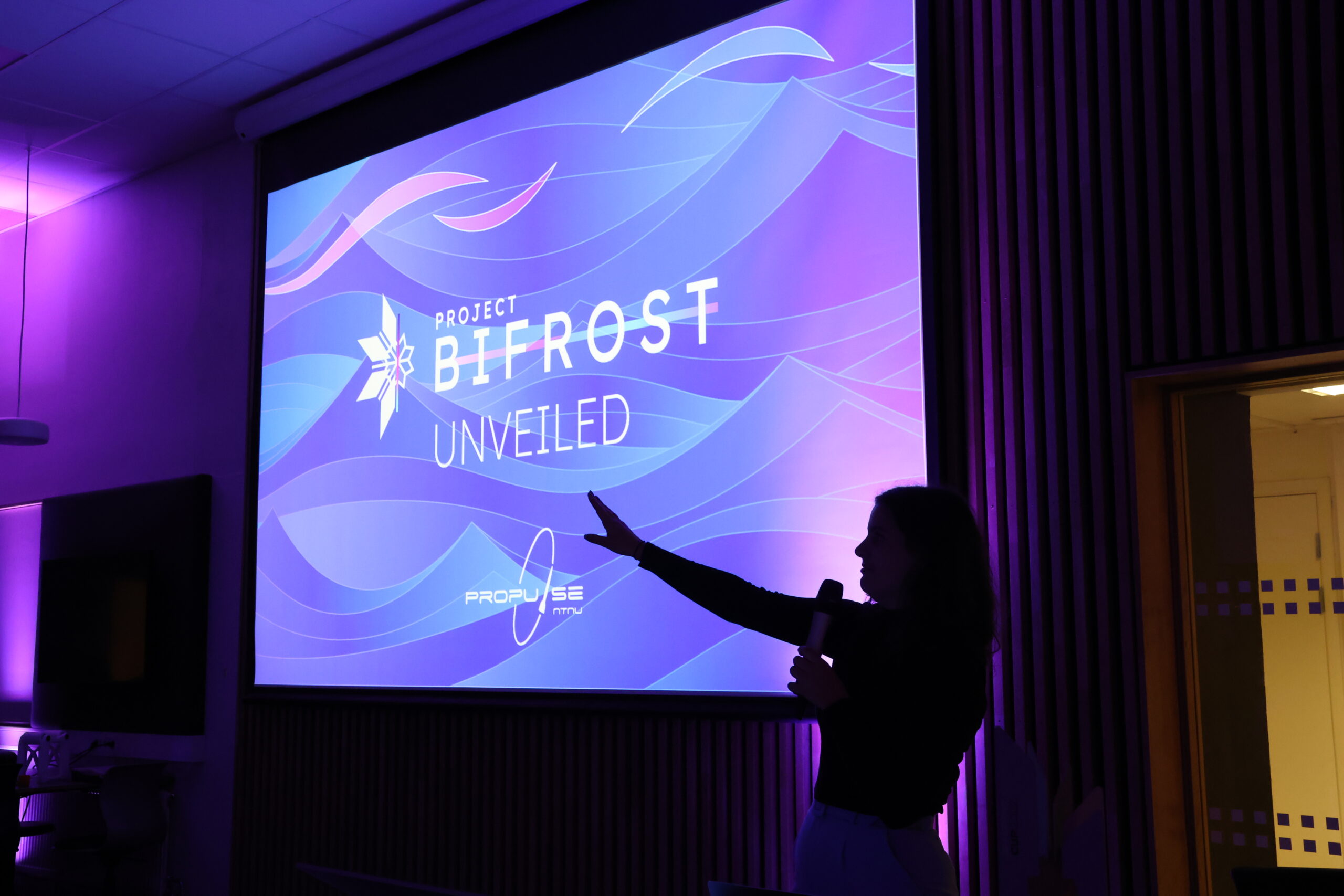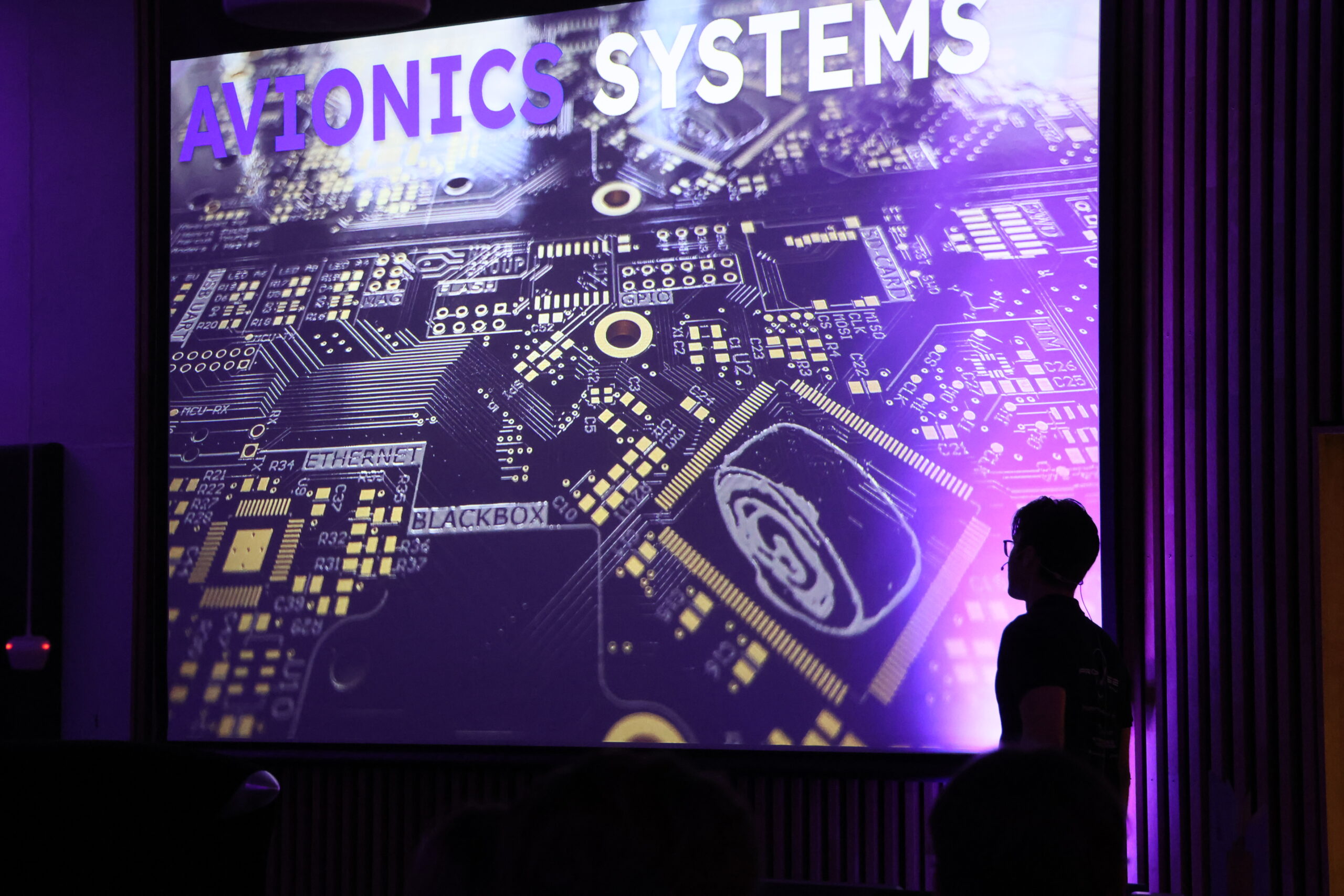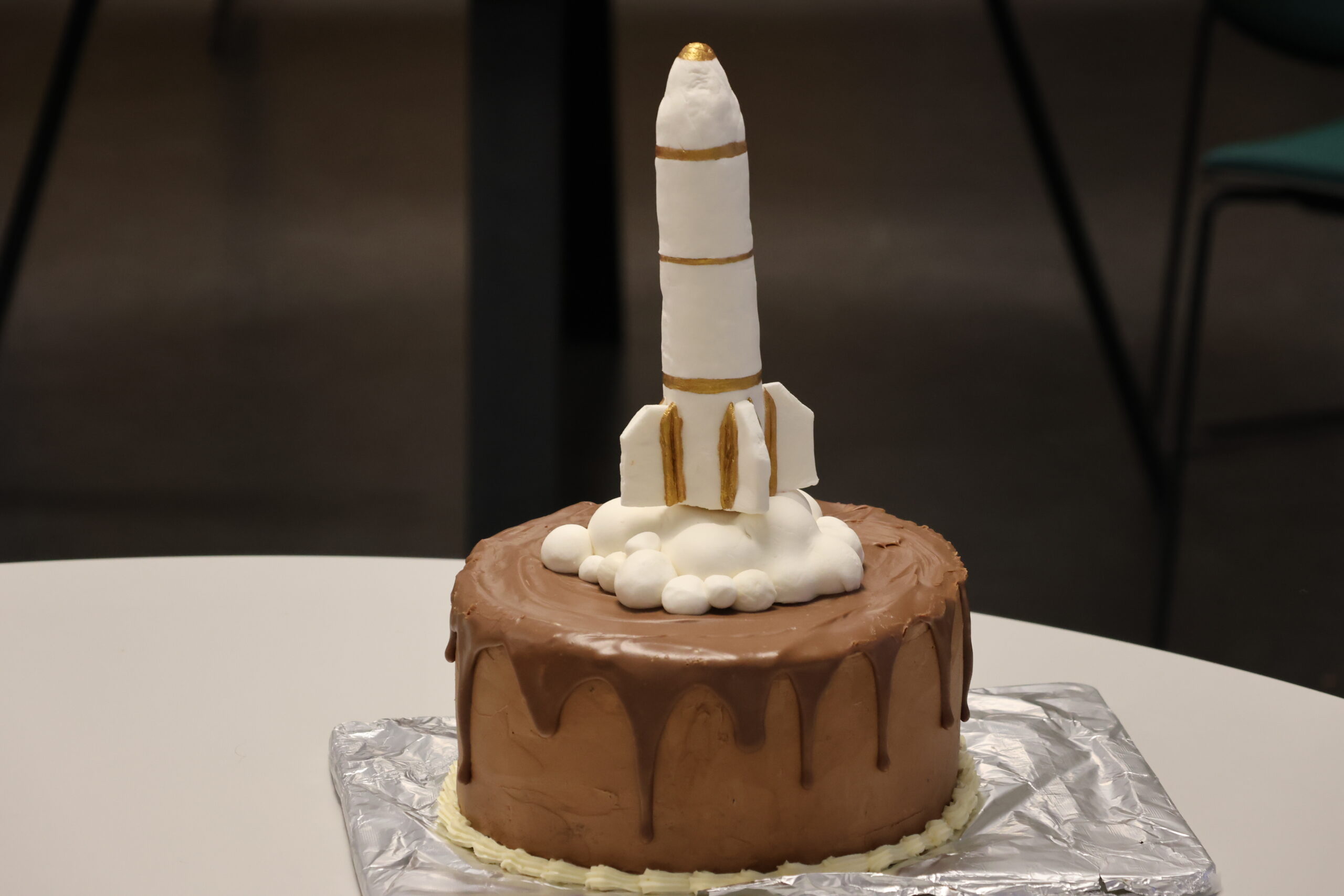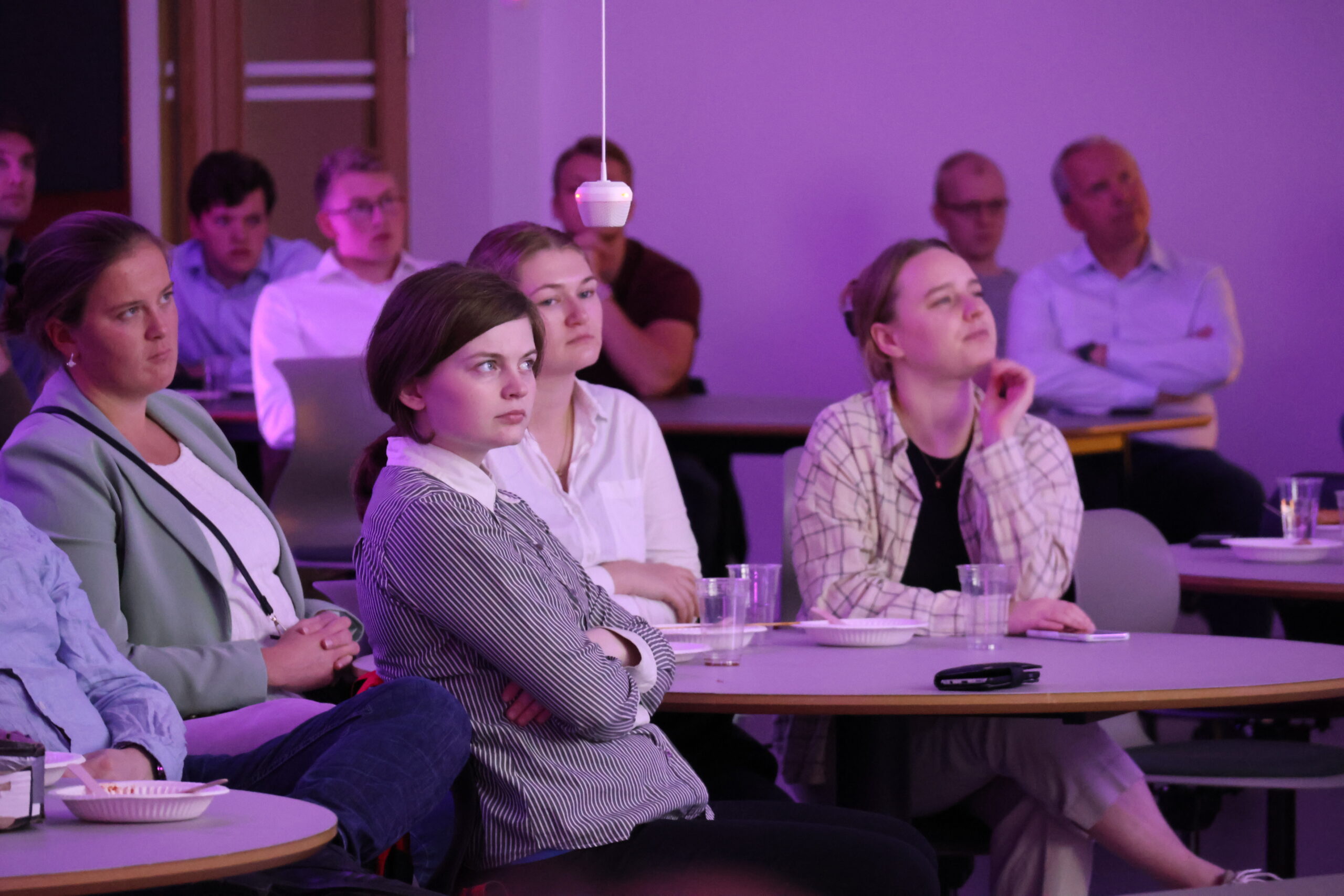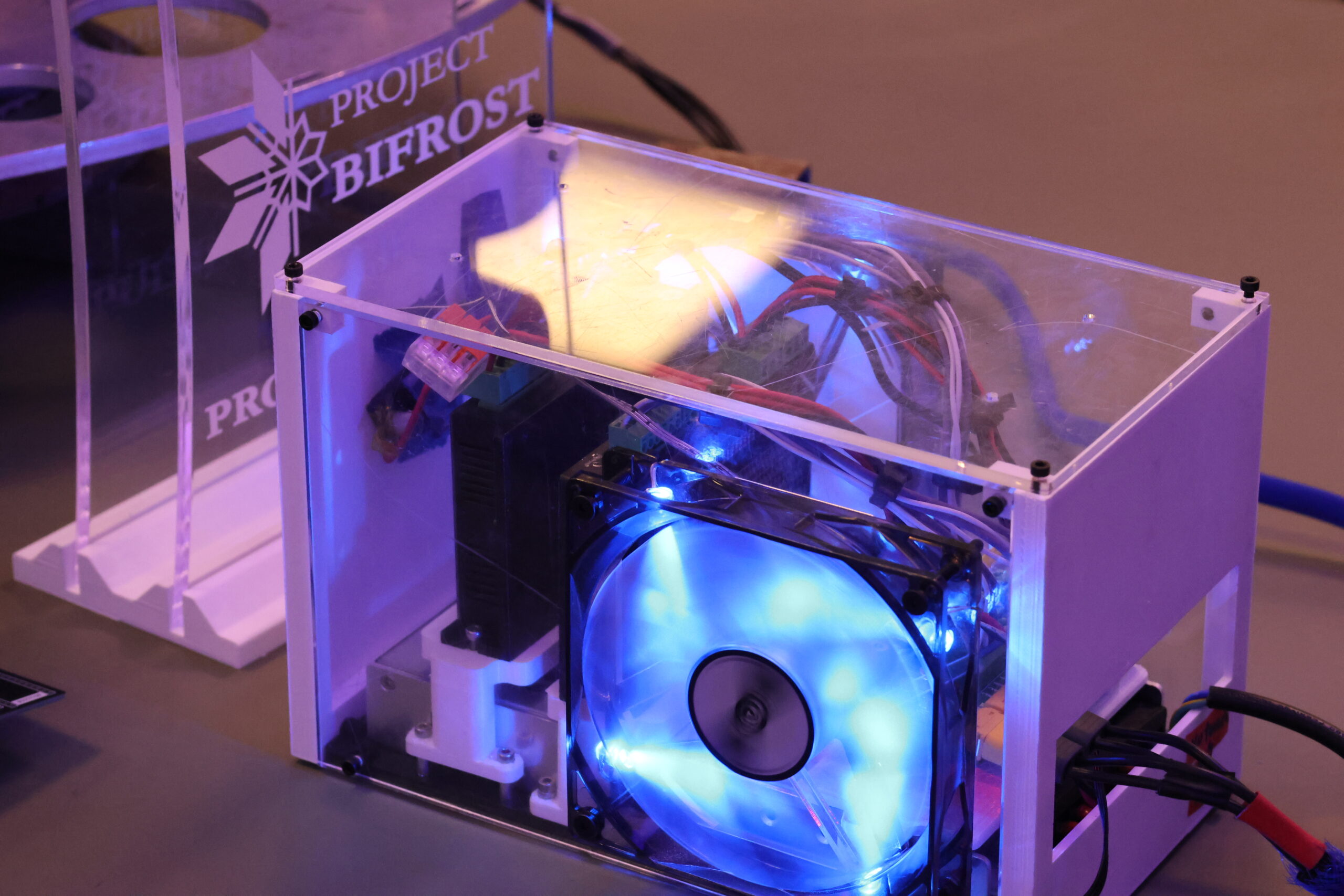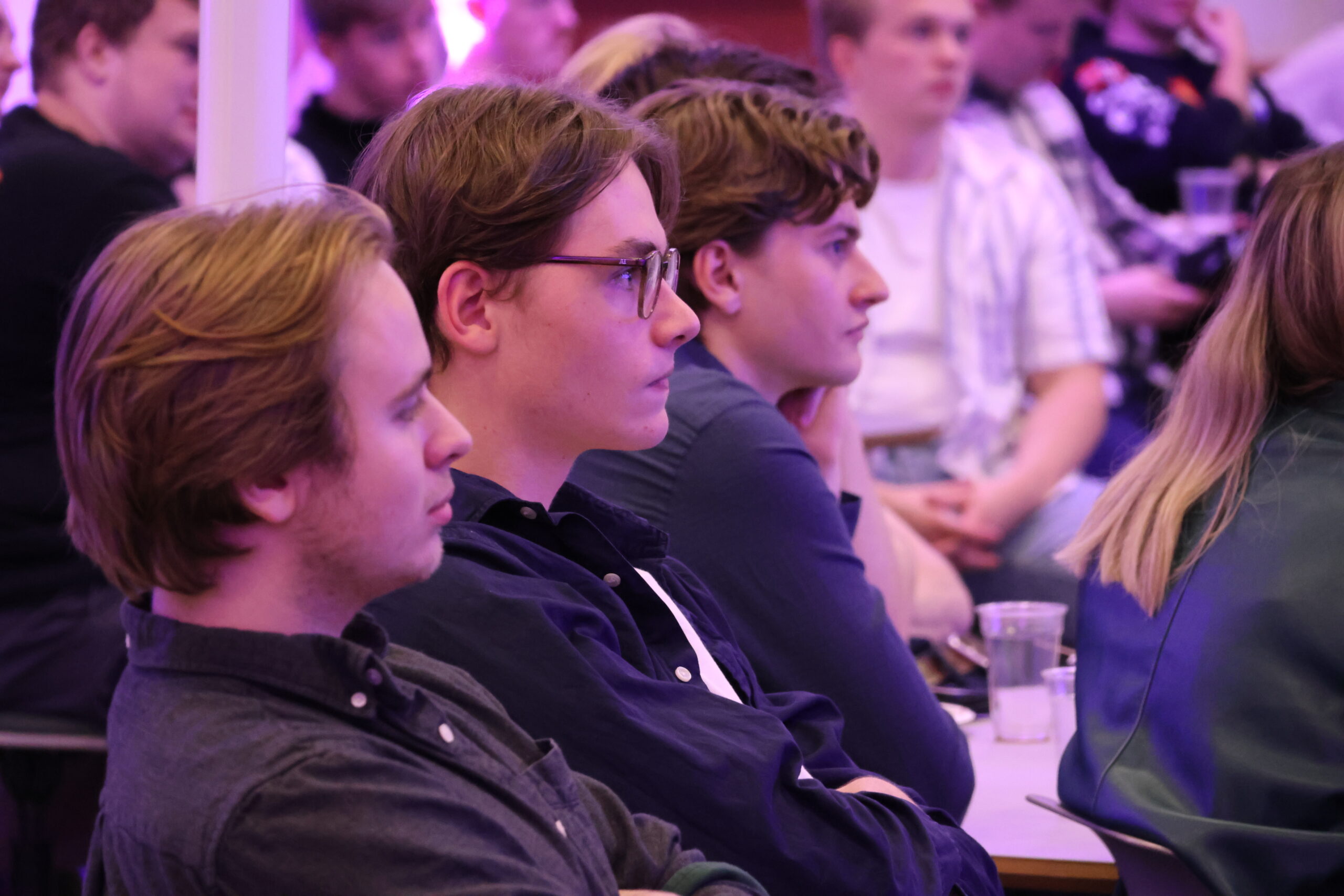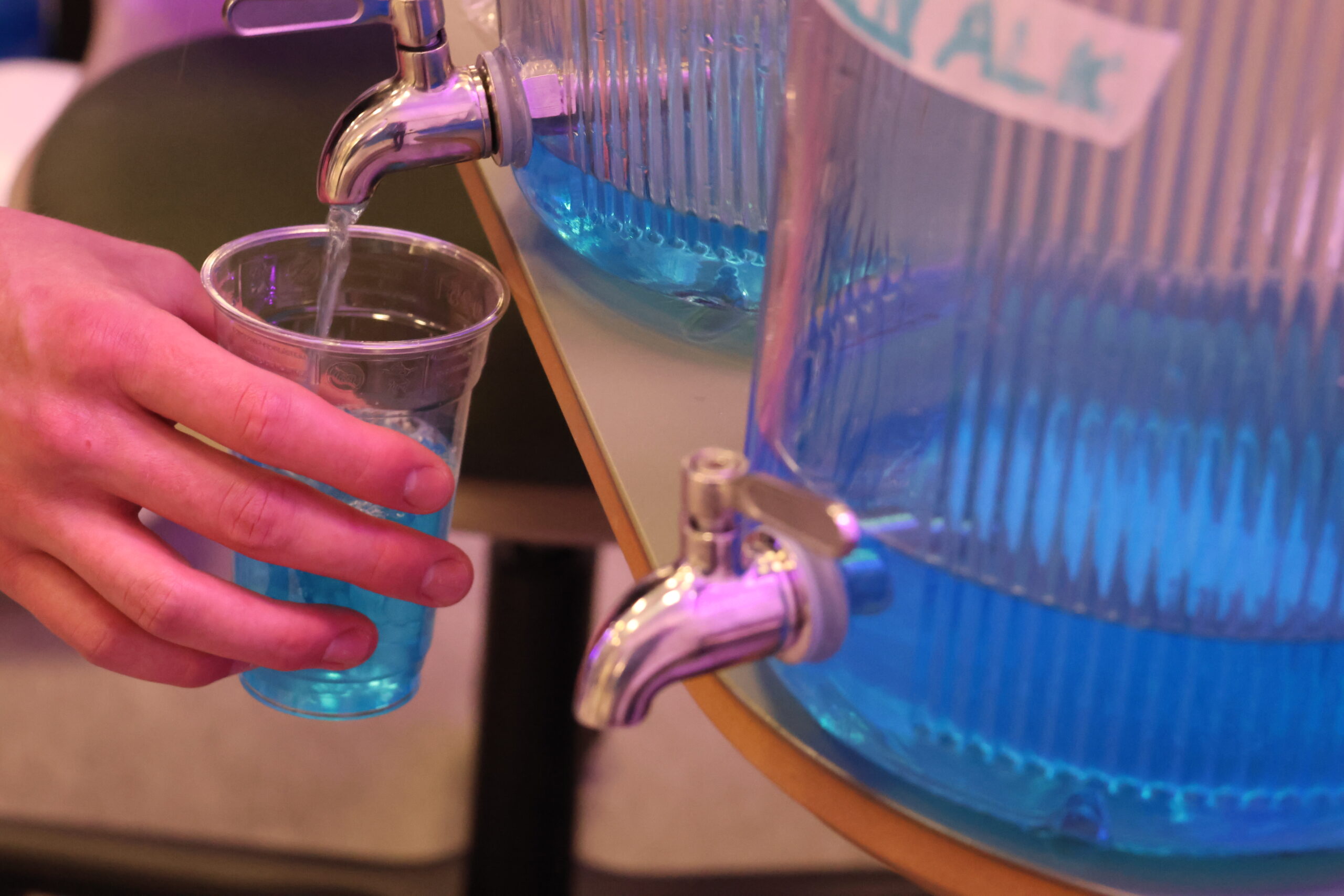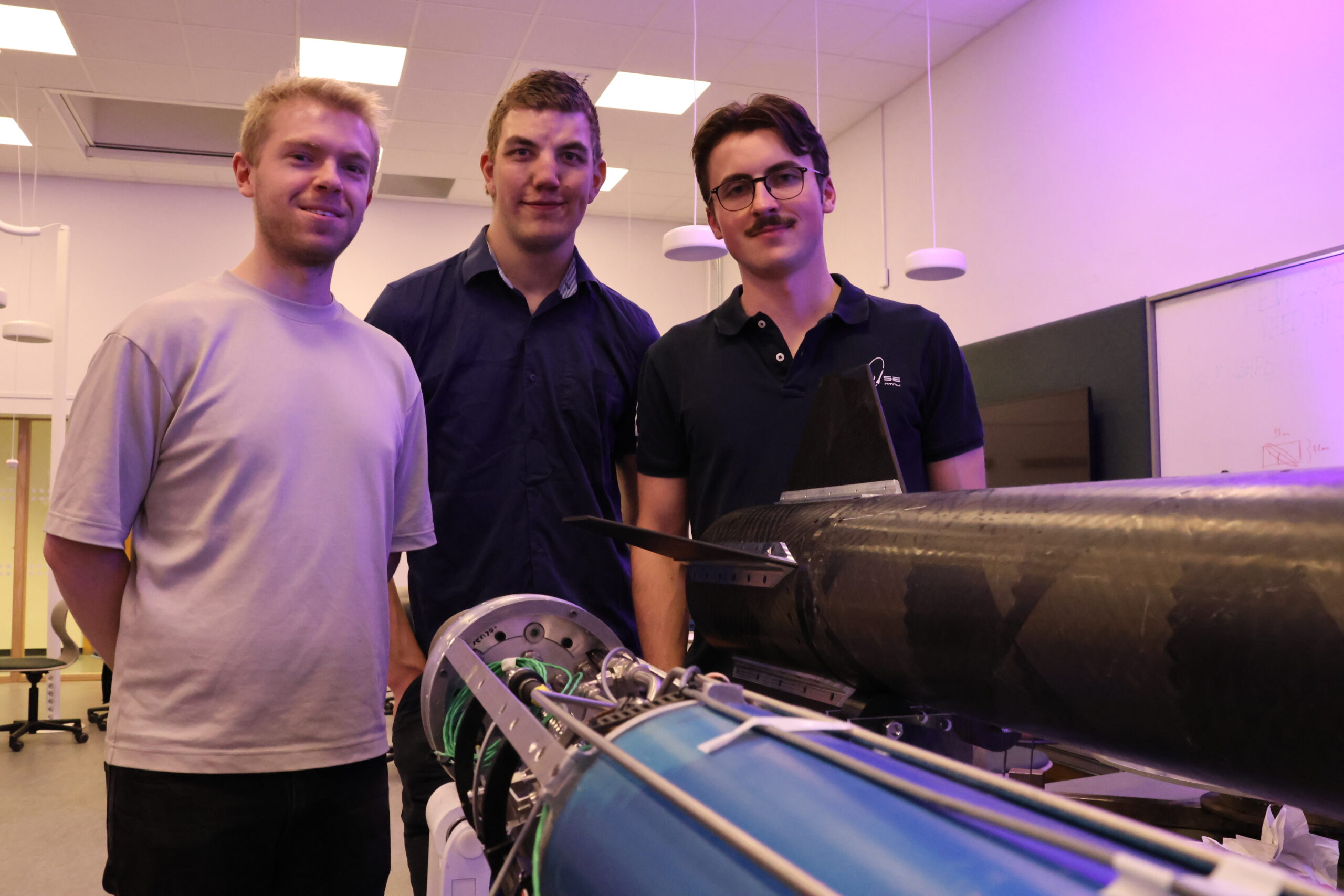- The Bifrost rocket is the largest physical rocket we have ever built, says Simen Flåtter Flo. He is chairman of the student organization Propulse NTNU, which develops research rockets and rocket propulsion systems. On Thursday, September 28th, the Bifrost rocket was unveiled. Propulse NTNU members, alumni, faculties, departments, and several industry partners were present.
The goal of Bifrost is to participate in The European Rocketry Challenge 2023 (EuRoC) in October, where Propulse will represent NTNU and Norway in the competition to become Europe's best rocket team. There are many new features in this year's rocket, not only for the students in Propulse but also for the Norwegian space industry.
- We will consider a successful launch, followed by a parachute landing, as a huge success, he says.
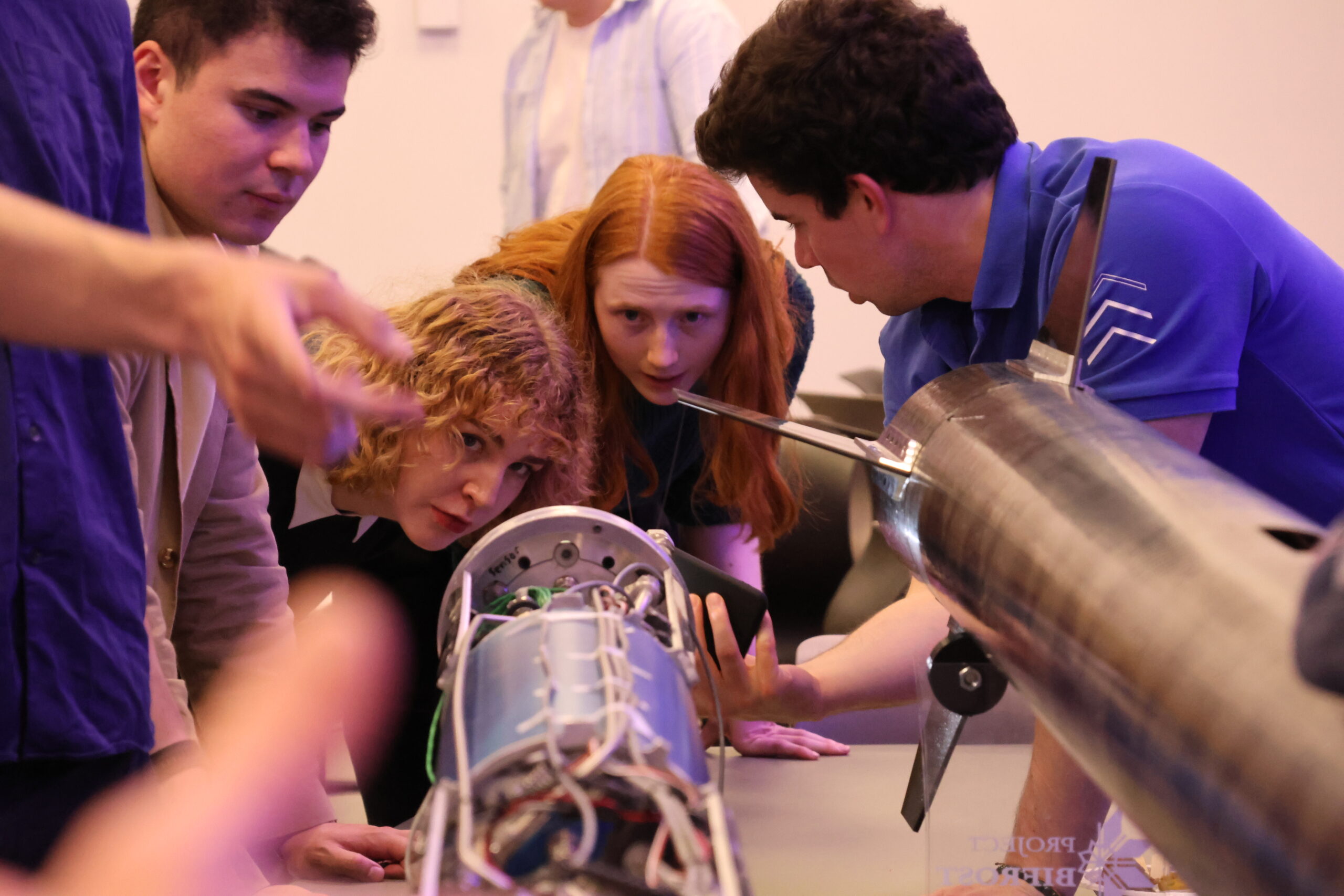
Gateway to space
- Project Bifrost is our first real step toward the goal of reaching space, says Flåtter Flo. Propulse NTNU's overarching goal is to reach space with a self-developed liquid-fueled rocket, providing students with experiences that will prepare Norway and the world for a future in space.
Since a group of space-interested students established Propulse in 2018, the group has built five rockets and grown to over 80 members. Every part of the organization is run by students on a voluntary basis alongside their full-time studies.
Since its inception, Propulse NTNU has gained recognition as a rapidly growing learning platform, with over 250 students contributing to previous projects that have ranked highly in international student competitions.
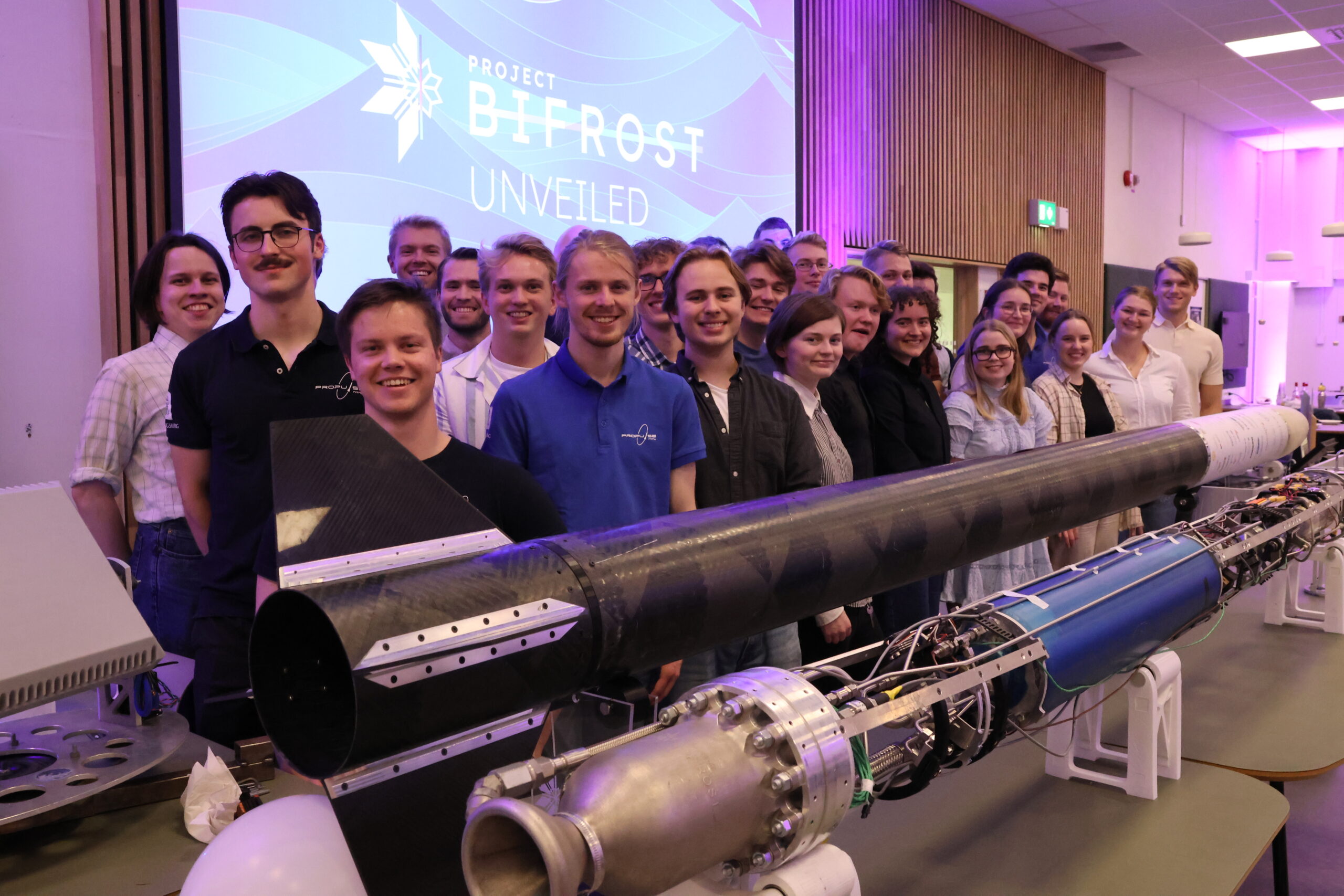
Mach 0.8 with Alcohol and Nitrous Oxide
Bifrost is powered by a rocket motor that is 3D-printed in metal, which mixes pure alcohol with liquid nitrous oxide to produce half a ton of thrust. This thrust is enough to lift the 80 kg rocket several kilometers with accelerations of up to 5 g. The planned launch altitude is 3000 meters, and the speed is estimated to be Mach 0.8, equivalent to 988 km/h.
It has a total height of 5 meters and is composed of student-developed systems in fields ranging from electronics, mechatronics, materials technology, and thermodynamics.
- It's our first attempt to develop a rocket motor entirely on our own - real rocket science, that is - something we have now achieved, says Flåtter Flo.
Satellite as Payload
Propulse closely collaborates with the satellite project Orbit NTNU. As payload, Bifrost will carry a 3 kg test model of Orbit NTNUs satellite project Biosat. The satellite has a pressure-sealed chamber that is meant to maintain 1 bar of pressure throughout the entire ascent.
When the satellite is later launched into space, it will contain a plant meant to grow in microgravity. The model is now being tested for mechanical stresses that can be expected during a launch. Orbit will also test whether the satellite's circuit boards can collect the necessary data during the launch.
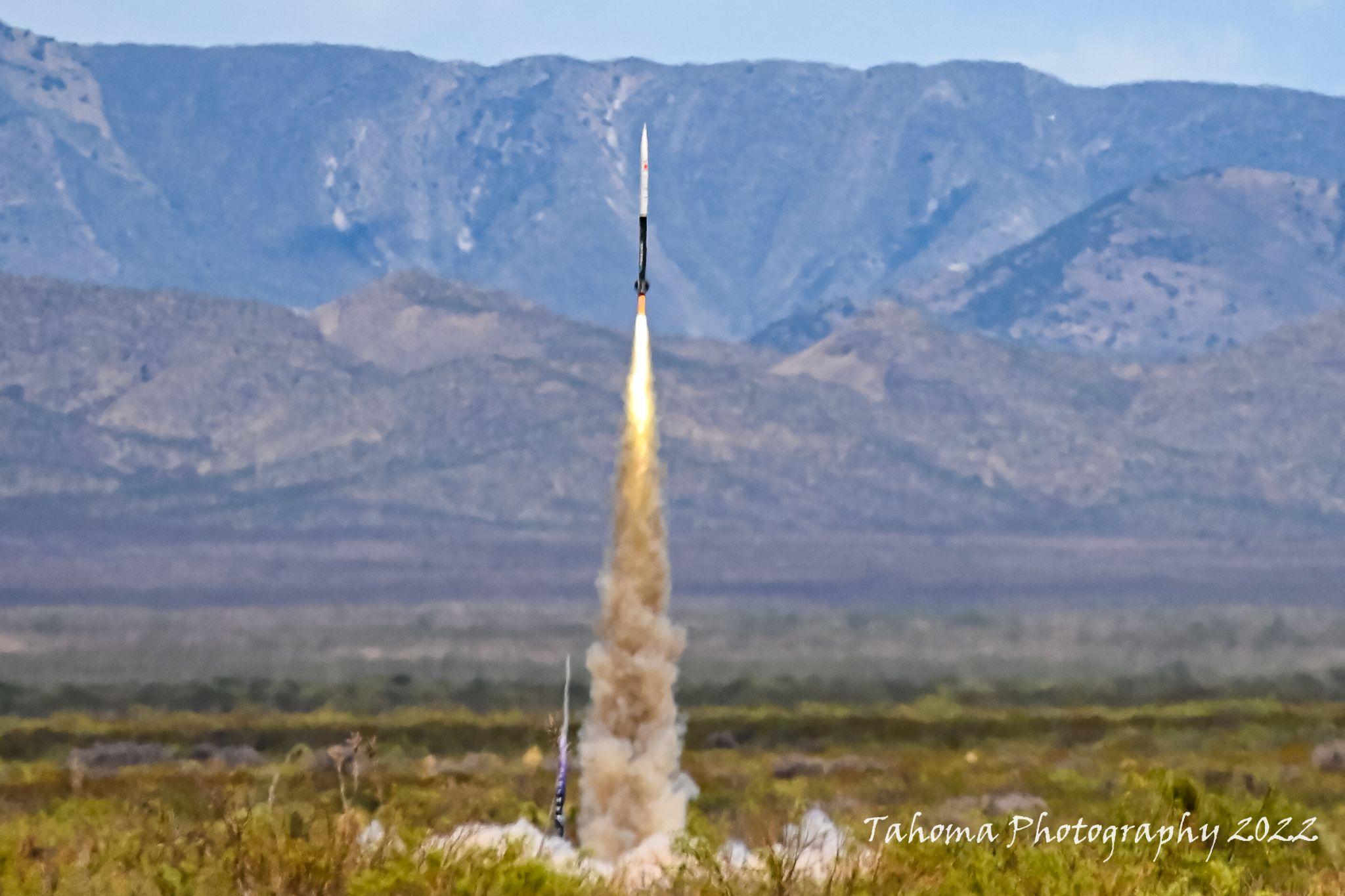
A Bridge Between the Gods and the Human World
The name Bifrost was chosen in line with Propulse's tradition of using Norse and Nordic names for their projects. In Norse mythology, Bifrost is the name of the bridge between Earth and the realm of the gods, representing the transition from something old to something new.
- This meaning appealed to us as the project represents something new for the organization in terms of ambition, complexity, difficulty, and potential. The new engine opens up a new world of possibilities. Plus, it's a rocket, so it forms a bridge to the sky, which, in many people's perception, brings us one step closer to the realm of the gods, says Flåtter Flo.
Since the Bifrost project started in September 2022, it has brought together over 80 students and more than 30 different industry partners for further exploration in the new space race among universities worldwide.
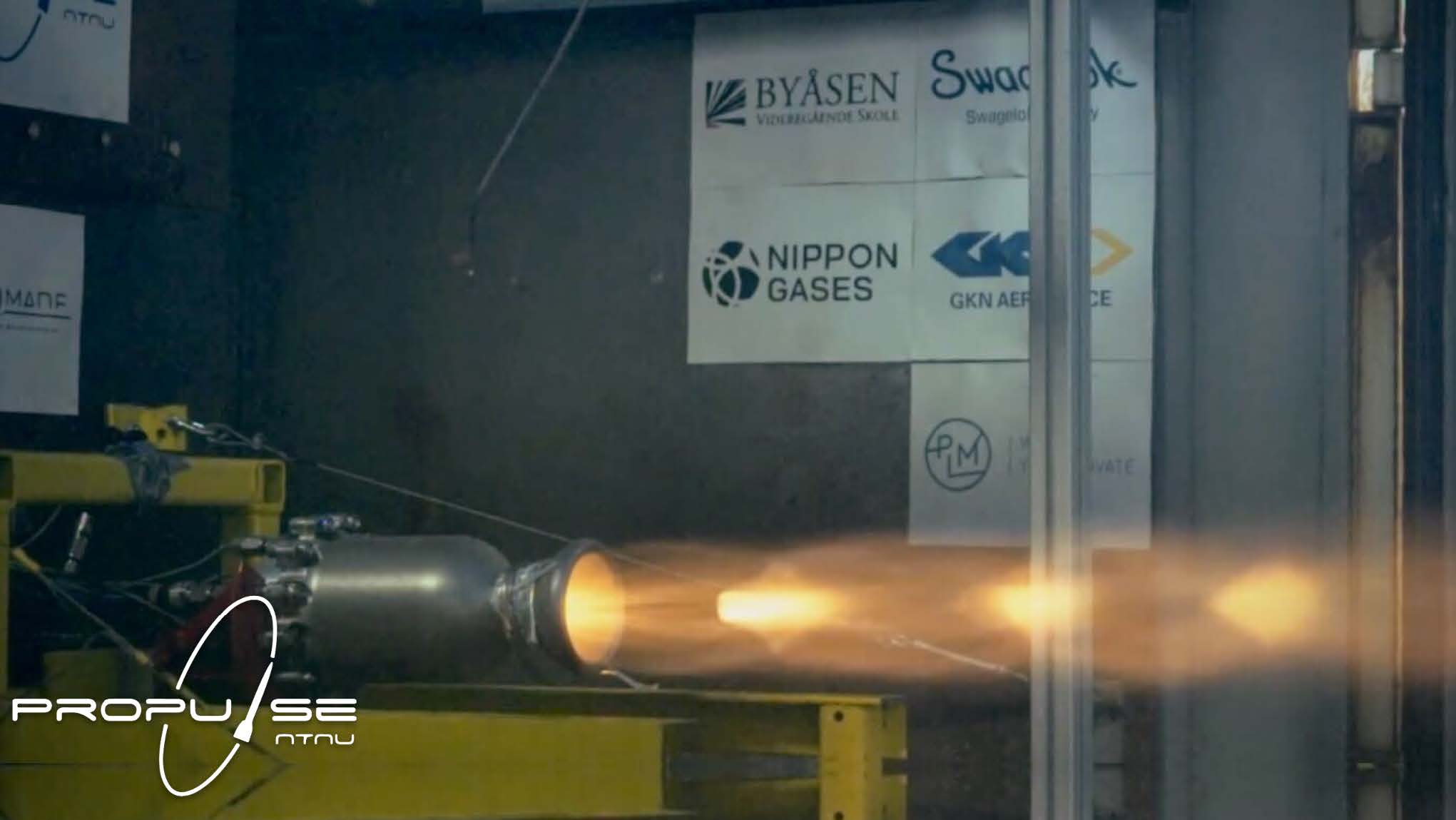
Next Launch in Trøndelag
- We have already started our next project, which will build on Bifrost," says Simen Flåtter Flo. The goal for next year's launch is to deliver a payload up to 10,000 meters and back, this time from Norwegian soil. The Norwegian Defense has been helpful in finding a suitable launch site in Trøndelag. Team 2024 has just begun and is currently in a training period. The 2024 team now consists of 74 members, two-thirds of whom are entirely new, and many of them are first-year students. The launch is scheduled for July 2024, and if everything goes according to plan, it will take place in Trøndelag, says the enthusiastic project leader.
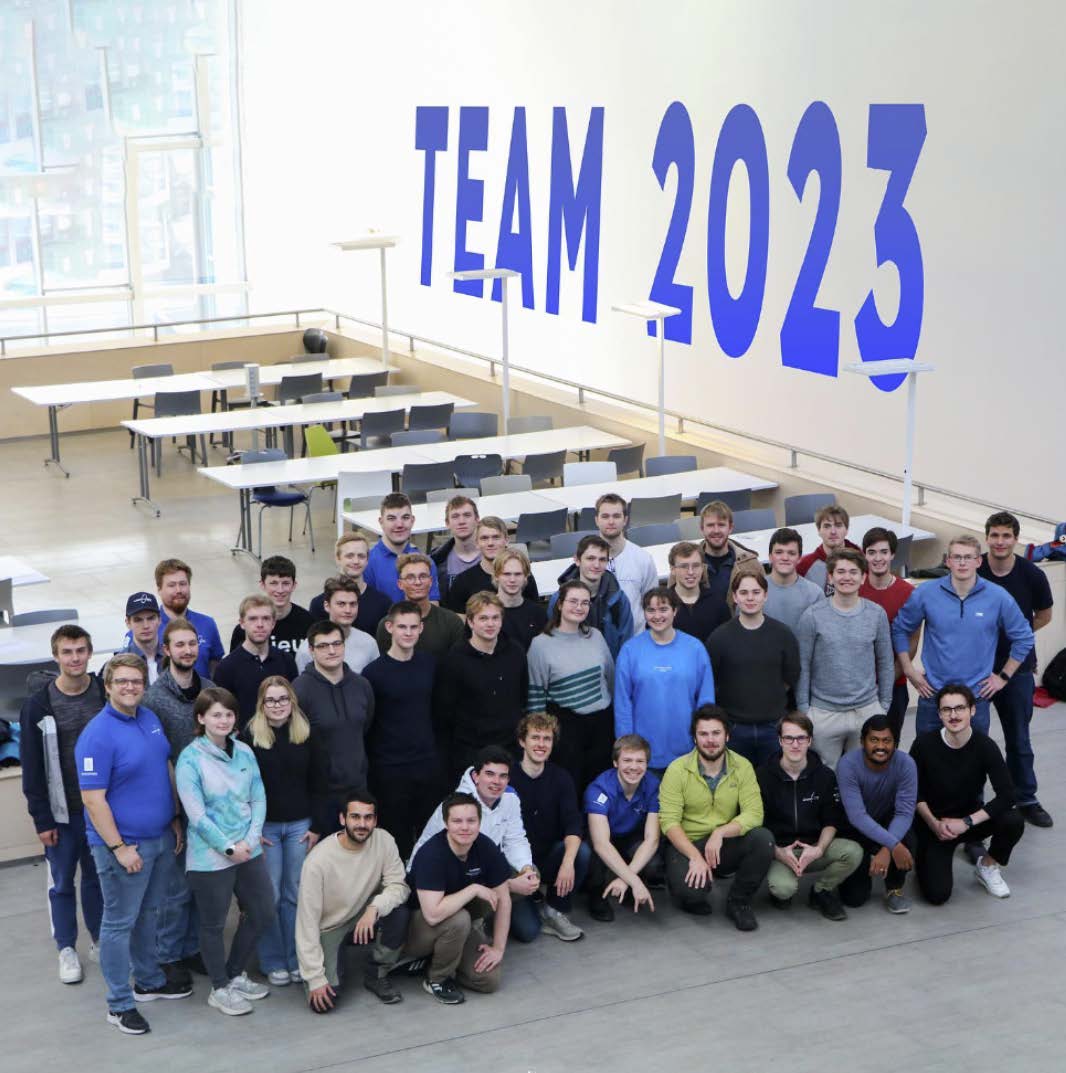
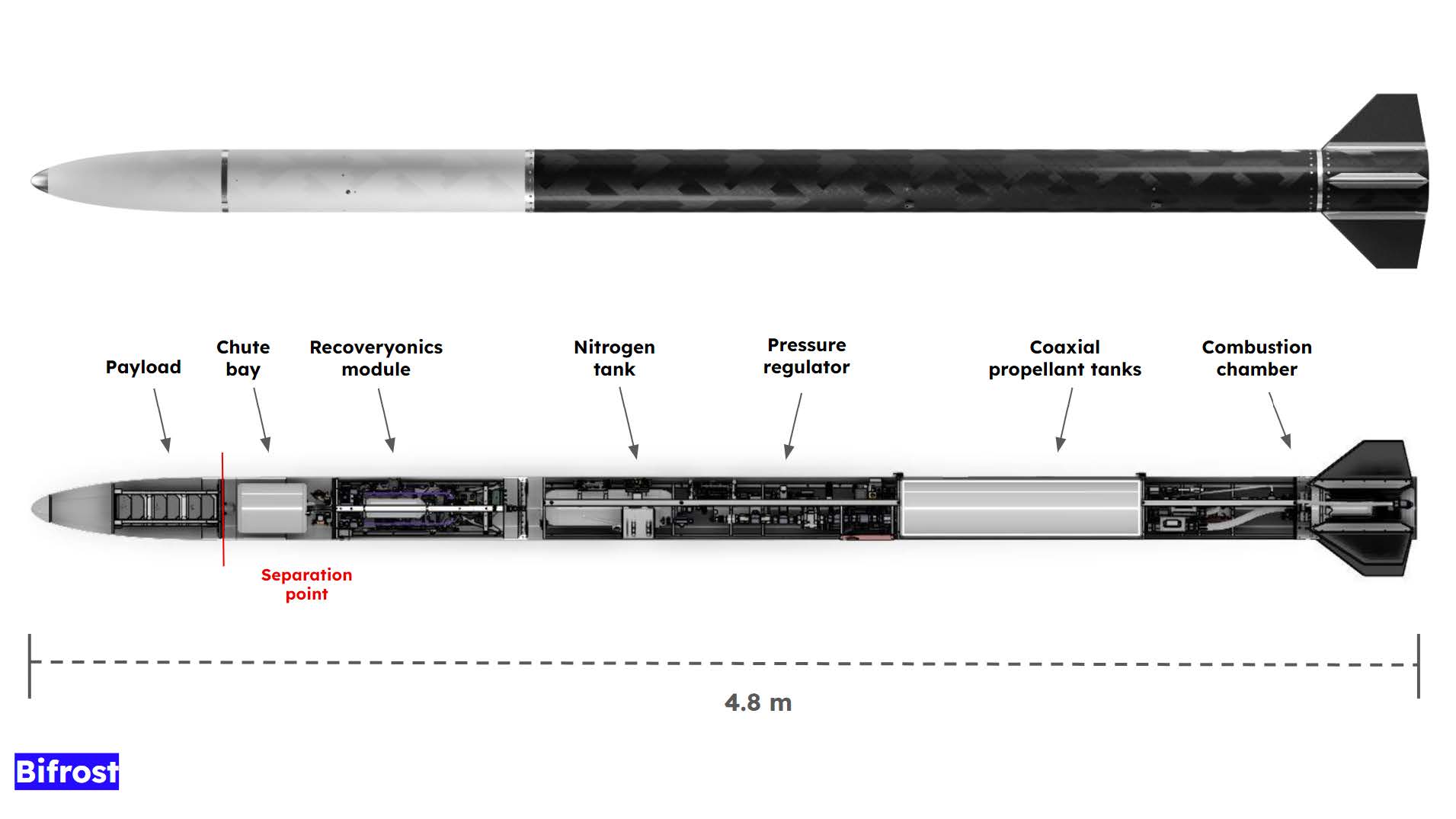
Photos from the unveiling
Photo: Lars Bugge Aarset / NTNU
